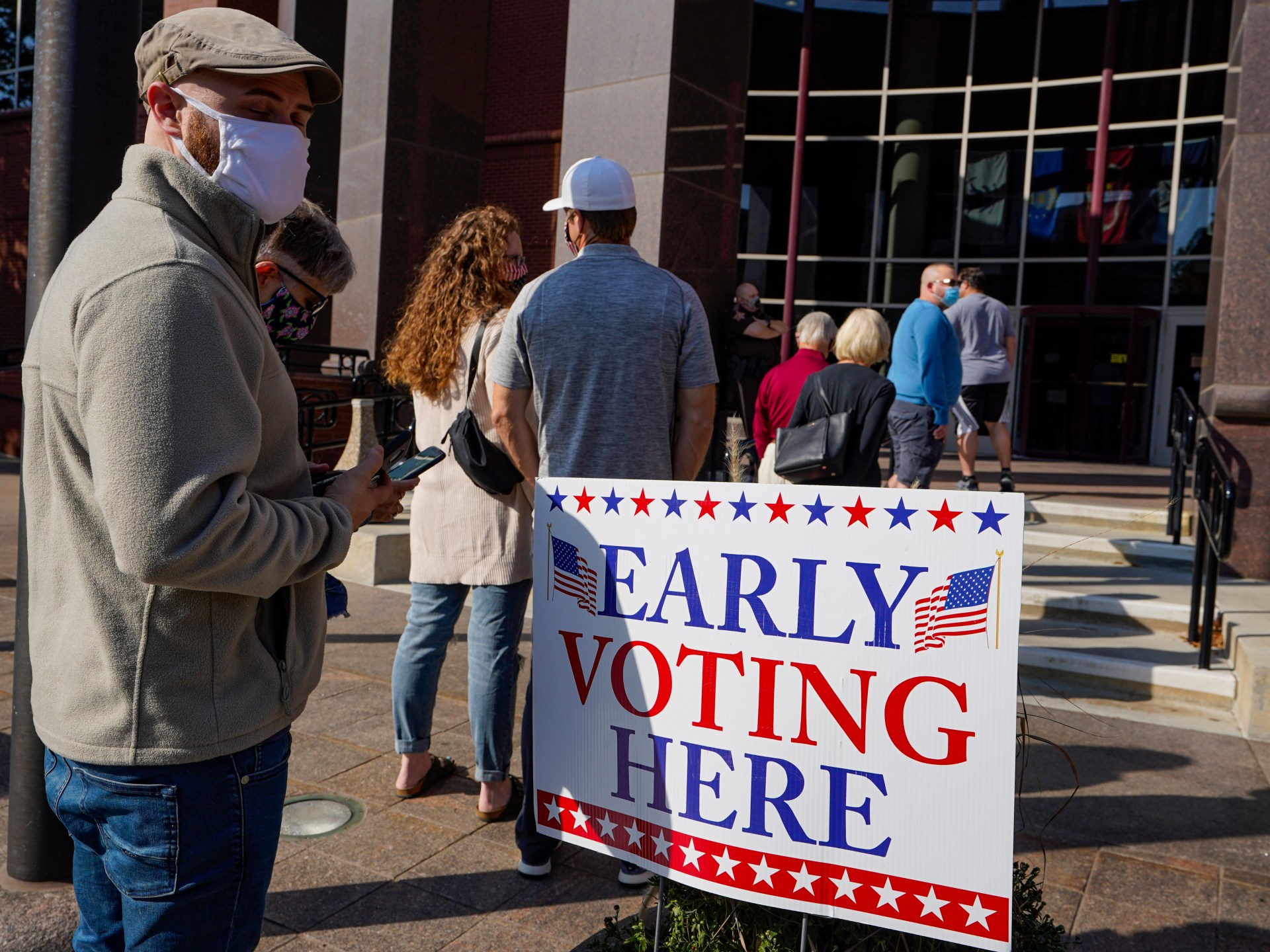Advocates say early voting makes elections more inclusive, but the practice has been the target of false fraud claims.
Election day in the United States may still be several weeks away, but Americans in several parts of the country are getting a chance to cast their ballots already.
In-person, advanced voting became possible in the US states of Minnesota, South Dakota and Virginia this week while several other states opened up their mail-in voting processes earlier this month.
Both are forms of “early voting”, a mainstay of US elections that in recent years has become a target of false voter fraud accusations.
Rights advocates say robust early voting opportunities help ensure more people can cast a ballot regardless of disability, time constraints, work, travel or other factors that could hamper them on election day, which this year is on November 5.
Early voting also offers an opportunity to build enthusiasm: When Taylor Swift, who recently endorsed Democratic candidate Kamala Harris, announced she would perform in Florida just before early voting begins there in October, local Democrats quickly seized on the moment.
“Taylor is bringing the Eras Tour to Miami in the weekend leading up to early voting, and I look forward to seeing that energy play out in Florida!!!” the Miami-Dade Democratic Party said.
So how does early voting work?
Voting in US presidential elections is only broadly steered by the federal government. US states determine much of how the logistics of the vote plays out in their respective jurisdictions.
Currently, every state in the country allows some form of early voting, with mail-in voting the most prevalent option.
At least eight of the 50 states send all registered voters a ballot in the mail while 14 still require voters to provide a reason for why they need to cast their ballot – sometimes known as an “absentee ballot” – by mail.
Most states also provide in-person voting before election day. Only three states do not.
How many Americans vote early?
That depends on the year.
In the 2020 election, which took place during the COVID-19 pandemic, more than 100 million voters cast their ballots before election day — representing about two-thirds of all Americans who voted that year, a record.
Americans living abroad, members of the US military and people with disabilities are among the many who have traditionally chosen to vote early.
A 2001 Supreme Court ruling upheld that voters did not need to provide a reason to cast an early ballot, as long as their state allows it.
Why is early voting controversial then?
Early voting — in particular, mail-in voting — was at the centre of unfounded election fraud claims in 2020.
That’s because Democrats have historically cast more votes by mail than Republicans, who are more likely to vote on election day. Many jurisdictions count votes cast in person before they begin counting mail-in votes although the process varies.
That can create a “blue shift” or “red mirage”, in which early results in key states appear to initially show the Republican candidate leading, only to shift to the Democratic candidate as the mail-in votes are counted.
In 2020, then-President Donald Trump falsely said the mail-in voting system was rife with fraud. The Republican ultimately lost the election to Democrat Joe Biden, but he has continued to claim the vote was stolen from him.
Many state legislatures enacted new restrictions on early voting after the 2020 contest, including higher scrutiny for ballots cast by mail.
But the Republican Party has more fully embraced early voting this year as Trump runs again against Democratic candidate Kamala Harris.




![Tyson Foods Plant [Photo: Food Manufacturing]](https://southarkansassun.com/wp-content/uploads/2023/08/iStock_1185520857__1_.5e441daa51cca-600x337.jpg)








![Silverado Senior Living Management Inc. [Photo: Los Angeles Times]](https://southarkansassun.com/wp-content/uploads/2023/10/download-6-4-600x337.jpg)

![China's Wuhan Institute of Virology [Photo: Nature]](https://southarkansassun.com/wp-content/uploads/2023/09/d41586-021-01529-3_19239608-600x337.jpg)















